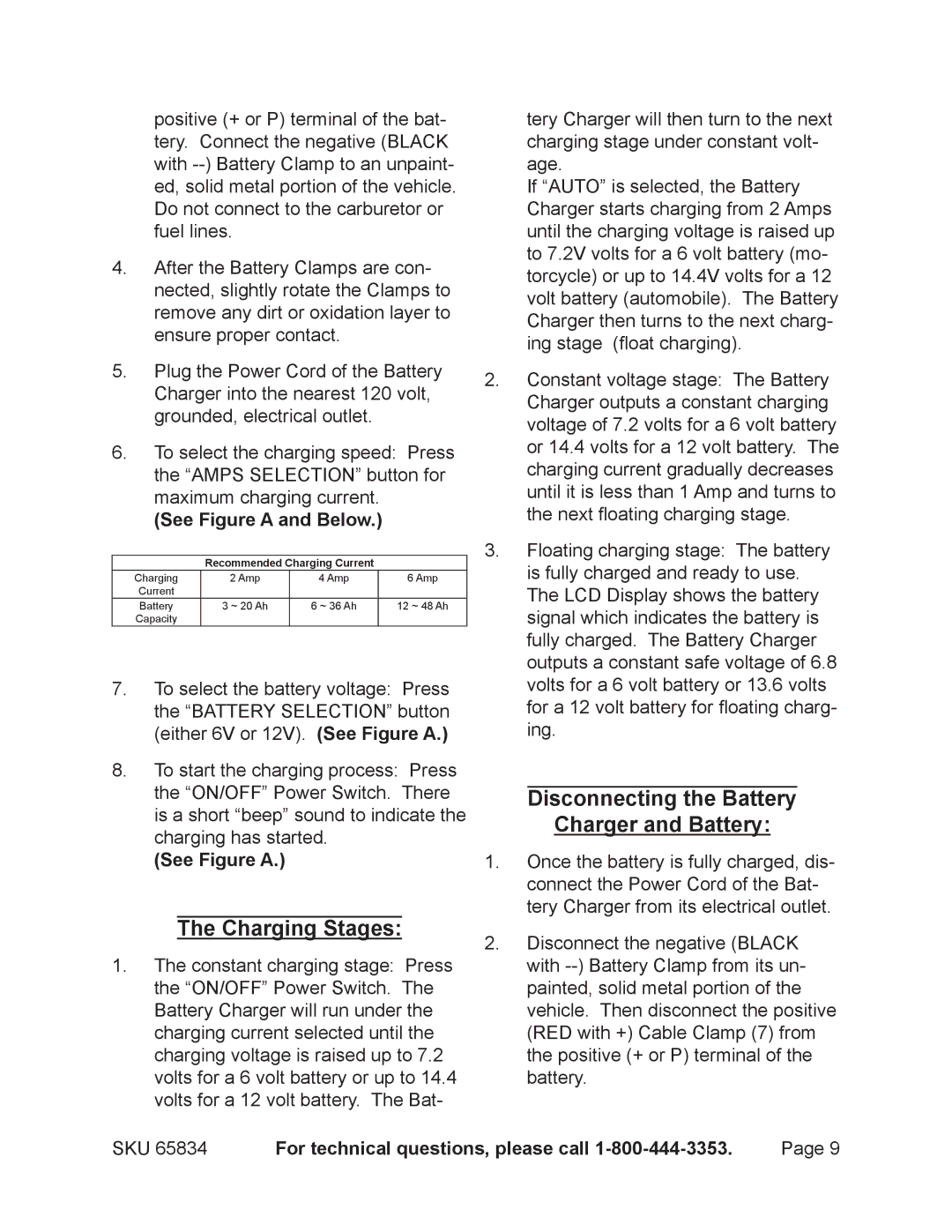65834 specifications
The Chicago Electric 65834 is a versatile tool that has gained attention for its combination of reliability and user-friendly features. This product is particularly favored among DIY enthusiasts and professionals alike, thanks to its powerful capabilities and broad range of applications.At the heart of the Chicago Electric 65834 is a robust 1500-watt motor that delivers enough strength for various cutting tasks. Whether it’s handling wood, metal, or plastics, the tool provides the necessary torque to get through tougher materials without compromising speed or accuracy. With a no-load speed of up to 3000 RPM, users can expect fast and efficient performance, making their projects quicker and more productive.
One of the standout features of the Chicago Electric 65834 is its adjustable speed settings. This allows users to tailor the tool's performance to match the specific requirements of each task. Be it delicate work or heavy-duty cutting, the ability to adjust the speed is a game-changer, providing greater control and versatility.
Another characteristic that sets this tool apart is its ergonomic design. The handle is designed for comfort, reducing fatigue during prolonged use. The lightweight nature of the tool also means that it can be maneuvered easily, giving users the confidence to tackle intricate cutting tasks without strain.
Safety is a priority in tool design, and the Chicago Electric 65834 includes several safety features. The tool comes equipped with a protective guard that shields the user from splinters and debris. It also has a lock-off switch to prevent accidental activation, ensuring that the tool remains secure during use and transportation.
The convenience of the Chicago Electric 65834 is further enhanced by its compatibility with a wide array of blades, allowing users to switch between different cutting tasks effortlessly. This adaptability makes it an ideal choice for both home improvement projects and professional workshops.
In conclusion, the Chicago Electric 65834 is a powerhouse of a tool, merging strength, speed, and safety features into one reliable package. Its adjustable speed settings, ergonomic design, and compatibility with various blades make it a valuable addition to any toolkit, catering to the needs of various users, from novice DIYers to seasoned professionals.

